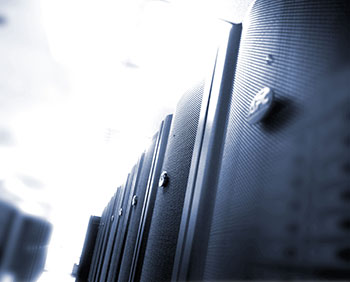UC San Diego Launches New Research Computing Program
Triton Shared Computing Cluster to Serve UC System, Industry Partners
By:
- Jan Zverina
Published Date
By:
- Jan Zverina
Share This:
Article Content
The University of California, San Diego has deployed a new high-performance research computing system called the Triton Shared Computing Cluster, or TSCC, serving researchers at UC San Diego and any of the other UC campuses as well as external academic, non-profit, and corporate users.

The cluster, designed and operated by the San Diego Supercomputer Center (SDSC) for UC San Diego’s Research Cyberinfrastructure (RCI) program, features state-of-the-art hardware as well as a revamped participation model offering researchers more options for funding their research computing needs.
“It’s exciting to roll out this next-generation computing system,” said Sandra A. Brown, UC San Diego’s Vice Chancellor for Research. “UC San Diego is committed to advancing the cyberinfrastructure resources of our researchers under the RCI program, and the new Triton system is one of the pillars of RCI’s integrated set of research services.”
TSCC is a follow-on to the UC San Diego’s initial research computing initiative, the Triton Resource, which was launched in 2009 and operated successfully for more than three years, serving the needs of hundreds of users from multiple UC campuses, outside research institutions, and private companies.
In addition to featuring updated hardware, TSCC offers a hybrid “condo/hotel” business model for participating researchers. Previously, the Triton cluster was supported by a “hotel” business model, in which blocks of computing time were pre-purchased at an hourly rate. While this model works very well for users with intermittent or lower levels of computing needs, it is less than ideal for users with long-term and/or relatively steady computing needs.
While TSCC continues to offer the hotel model option, the system also now implements a “condo” computing model, under which researchers with equipment purchase funds from grants or other sources can buy computing “nodes” (servers) and have them installed in the cluster, where they become part of a shared resource for a four-year period.
Once the researcher’s purchased nodes are part of the cluster, the researcher may run on those nodes for an essentially unlimited period of time during the four-year period, or run larger computing jobs on the broader cluster, sharing the system with other users. Additionally, when the researcher’s purchased nodes are idle, computing time may be “scavenged” from them to support other users.

“The primary benefits to participants include gaining access to a much larger resource than they could afford solely for their labs, and having a system that is professionally maintained by full-time staff instead of being maintained part-time by lab personnel,” said Ron Hawkins, SDSC’s director of industry relations.
To incentivize participation by UC San Diego researchers, the university’s RCI program covers most of the operating costs such as system administration, user support and software licensing, so that UC San Diego condo users pay only a modest annual operating fee beyond the hardware purchase costs.
“Looking at research computing programs at other campuses, the condo model has proved to be one of the most successful, sustainable business models for research computing,” said Richard Moore, deputy director at SDSC and project manager for the RCI program.
State-of-the-Art Hardware
The TSCC features completely updated computing hardware. Each computing node contains two Intel Xeon E5-2670 (“Sandy Bridge”) processors with 8 cores each and a memory-rich 64 gigabytes (GB) of main memory. The system network (interconnect) across the entire system is 10 Gigabit Ethernet. Options are available for condo users to purchase larger memory nodes and/or utilize higher performance (Infiniband) interconnect for low-latency parallel computing. Hotel users have access to Infiniband-connected nodes.
Researchers also have the option to purchase nodes with NVIDIA Graphics Processing Units (GPUs), which are becoming popular for a number of scientific computing tasks. The ensemble of core features and options provides researchers with a state-of-the-art, high-performance computing resource fulfilling a wide range of scientific computing needs.
Moreover, the TSCC is designed to work with the full complement of capabilities at UC San Diego, including high-performance networking and centralized storage systems. Connectivity is available to high-throughput scientific instruments across campus, such as DNA sequencers and mass spectrometers. As with Triton, TSCC is enabled with a wide range of open source and licensed software for science and engineering.
“We are proud to offer this high-performance computing capability to UC researchers and outside partners,” said Moore. “Our experience with Triton has shown that high-end research computing capabilities are in demand, and TSCC ups the game in terms of the capability we can offer to enable new scientific discoveries.”
Interested parties can find more information on the TSCC and participation programs at http://rci.ucsd.edu/computing.
Share This:
Stay in the Know
Keep up with all the latest from UC San Diego. Subscribe to the newsletter today.



